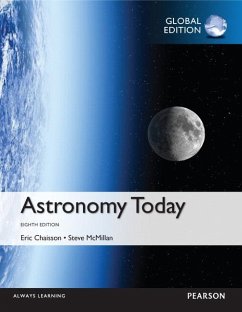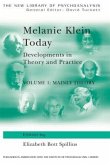With Astronomy Today, Eighth Edition, trusted authors Eric Chaisson and Steve McMillan communicate their excitement about astronomy, delivering current and thorough science with insightful pedagogy. The text emphasizes critical thinking and visualization, and it focuses on the process of scientific discovery, teaching students “how we know what we know.”
Alternate Versions
Astronomy Today, Volume 1: The Solar System, Eighth Edition—Focuses primarily on planetary coverage for a 1-term course. Includes Chapters 1–16, 28.
Astronomy Today, Volume 2: Stars and Galaxies, Eighth Edition—Focuses primarily on stars and stellar evolution for a 1-term course. Includes Chapters 1–5 and 16–28.
Product Description
With Astronomy Today, Eighth Edition, trusted authors Eric Chaisson and Steve McMillan communicate their excitement about astronomy, delivering current and thorough science with insightful pedagogy. The text emphasizes critical thinking and visualization, and it focuses on the process of scientific discovery, teaching students “how we know what we know.”
Alternate Versions
Astronomy Today, Volume 1: The Solar System, Eighth Edition—Focuses primarily on planetary coverage for a 1-term course. Includes Chapters 1–16, 28.
Astronomy Today, Volume 2: Stars and Galaxies, Eighth Edition—Focuses primarily on stars and stellar evolution for a 1-term course. Includes Chapters 1–5 and 16–28.
Features + Benefits
The Process of Science
The Process of Science is emphasized throughout the book and the authors strive to give students an understanding of how scientists think and work.
Students are encouraged to ask how we know what we know and to learn the historical development of the discipline.
Insightful Pedagogy
Process of Science Check questions throughout every chapter prompt students to consider how astronomers use various aspects of the process of science in their research. Concept Checks are critical-thinking questions throughout each chapter that prompt students to reflect on the material just presented and to test their mastery of key concepts. Answers are provided in the back of the book.
The Big Picture feature on each chapter opening spread explains how chapter content fits in with an overall perspective on introductory astronomy, helping students see how each chapter is connected to a broad understanding of the universe.
Concept Link Icons refer students back to previous sections in the text to help them understand how concepts are related and allow them to more easily see the “big picture.”
Discovery Boxes explore a wide variety of interesting supplementary topics, providing students with insight into how scientific knowledge evolves and emphasizing the process of science.
More Precisely Boxes present mathematical information that the instructor can include or exclude in class discussions.
Spectrum Icons accompany each photo in the text, identifying the wavelength used to capture the image and reinforcing for students how light influences the way we see things.
ART
Compound Art employs multiple-part images to capture all aspects of a complex subject wherever possible, including images from various wavelengths, interpretive line drawings paired with astronomical photographs, and breakouts that zoom in to or out from astronomical objects and phenomena.
Annotated Art, newly introduced in this edition and appearing in at least half of the book’s figures, employs a proven educational research tool by integrating written and visual information to enhance student understanding of photos and diagrams.
I. ASTRONOMY AND THE UNIVERSE
1. Charting the Heavens: The Foundations of Astronomy
2. The Copernican Revolution: The Birth of Modern Science
3. Radiation: Information from the Cosmos
4. Spectroscopy: The Inner Workings of Atoms
5. Telescopes: The Tools of Astronomy
II. OUR PLANETARY SYSTEM
6. The Solar System: Comparative Planetology and Formation Models7. Earth: Our Home in Space
8. The Moon and Mercury: Scorched and Battered Worlds
9. Venus: Earth’s Sister Planet
10. Mars: A Near Miss for Life?
11. Jupiter: Giant of the Solar System
12. Saturn: Spectacular Rings and Mysterious Moons
13. Uranus and Neptune: The Outer Worlds of the Solar System
14. Solar System Debris: Keys to Our Origin
15. Exoplanets: Planetary Systems Beyond Our Own.
III. STARS AND STELLAR EVOLUTION
16. The Sun: Our Parent Star
17. The Stars: Giants, Dwarfs, and the Main Sequence
18. The Interstellar Medium: Gas and Dust among the Stars
19. Star Formation: A Traumatic Birth
20. Stellar Evolution: The Life and Death of a Star
21. Stellar Explosions: Novae, Supernovae, and the Formation of the Elements
22. Neutron Stars and Black Holes: Strange States of Matter
IV. GALAXIES AND COSMOLOGY
23. The Milky Way Galaxy: A Spiral in Space
24. Galaxies: Building Blocks of the Universe
25. Galaxies and Dark Matter: The Large-Scale Structure of the Cosmos
26. Cosmology: The Big Bang and the Fate of the Universe
27. The Early Universe: Toward the Beginning of Time
28. Life in the Universe: Are We Alone?
With Astronomy Today, 8th Edition, trusted authors Eric Chaisson and Steve McMillan communicate their excitement about astronomy, delivering current and thorough science with insightful pedagogy. The text emphasises critical thinking and visualisation, and it focuses on the process of scientific discovery, teaching students â how we know what we know.â
Hinweis: Dieser Artikel kann nur an eine deutsche Lieferadresse ausgeliefert werden.
Alternate Versions
Astronomy Today, Volume 1: The Solar System, Eighth Edition—Focuses primarily on planetary coverage for a 1-term course. Includes Chapters 1–16, 28.
Astronomy Today, Volume 2: Stars and Galaxies, Eighth Edition—Focuses primarily on stars and stellar evolution for a 1-term course. Includes Chapters 1–5 and 16–28.
Product Description
With Astronomy Today, Eighth Edition, trusted authors Eric Chaisson and Steve McMillan communicate their excitement about astronomy, delivering current and thorough science with insightful pedagogy. The text emphasizes critical thinking and visualization, and it focuses on the process of scientific discovery, teaching students “how we know what we know.”
Alternate Versions
Astronomy Today, Volume 1: The Solar System, Eighth Edition—Focuses primarily on planetary coverage for a 1-term course. Includes Chapters 1–16, 28.
Astronomy Today, Volume 2: Stars and Galaxies, Eighth Edition—Focuses primarily on stars and stellar evolution for a 1-term course. Includes Chapters 1–5 and 16–28.
Features + Benefits
The Process of Science
The Process of Science is emphasized throughout the book and the authors strive to give students an understanding of how scientists think and work.
Students are encouraged to ask how we know what we know and to learn the historical development of the discipline.
Insightful Pedagogy
Process of Science Check questions throughout every chapter prompt students to consider how astronomers use various aspects of the process of science in their research. Concept Checks are critical-thinking questions throughout each chapter that prompt students to reflect on the material just presented and to test their mastery of key concepts. Answers are provided in the back of the book.
The Big Picture feature on each chapter opening spread explains how chapter content fits in with an overall perspective on introductory astronomy, helping students see how each chapter is connected to a broad understanding of the universe.
Concept Link Icons refer students back to previous sections in the text to help them understand how concepts are related and allow them to more easily see the “big picture.”
Discovery Boxes explore a wide variety of interesting supplementary topics, providing students with insight into how scientific knowledge evolves and emphasizing the process of science.
More Precisely Boxes present mathematical information that the instructor can include or exclude in class discussions.
Spectrum Icons accompany each photo in the text, identifying the wavelength used to capture the image and reinforcing for students how light influences the way we see things.
ART
Compound Art employs multiple-part images to capture all aspects of a complex subject wherever possible, including images from various wavelengths, interpretive line drawings paired with astronomical photographs, and breakouts that zoom in to or out from astronomical objects and phenomena.
Annotated Art, newly introduced in this edition and appearing in at least half of the book’s figures, employs a proven educational research tool by integrating written and visual information to enhance student understanding of photos and diagrams.
I. ASTRONOMY AND THE UNIVERSE
1. Charting the Heavens: The Foundations of Astronomy
2. The Copernican Revolution: The Birth of Modern Science
3. Radiation: Information from the Cosmos
4. Spectroscopy: The Inner Workings of Atoms
5. Telescopes: The Tools of Astronomy
II. OUR PLANETARY SYSTEM
6. The Solar System: Comparative Planetology and Formation Models7. Earth: Our Home in Space
8. The Moon and Mercury: Scorched and Battered Worlds
9. Venus: Earth’s Sister Planet
10. Mars: A Near Miss for Life?
11. Jupiter: Giant of the Solar System
12. Saturn: Spectacular Rings and Mysterious Moons
13. Uranus and Neptune: The Outer Worlds of the Solar System
14. Solar System Debris: Keys to Our Origin
15. Exoplanets: Planetary Systems Beyond Our Own.
III. STARS AND STELLAR EVOLUTION
16. The Sun: Our Parent Star
17. The Stars: Giants, Dwarfs, and the Main Sequence
18. The Interstellar Medium: Gas and Dust among the Stars
19. Star Formation: A Traumatic Birth
20. Stellar Evolution: The Life and Death of a Star
21. Stellar Explosions: Novae, Supernovae, and the Formation of the Elements
22. Neutron Stars and Black Holes: Strange States of Matter
IV. GALAXIES AND COSMOLOGY
23. The Milky Way Galaxy: A Spiral in Space
24. Galaxies: Building Blocks of the Universe
25. Galaxies and Dark Matter: The Large-Scale Structure of the Cosmos
26. Cosmology: The Big Bang and the Fate of the Universe
27. The Early Universe: Toward the Beginning of Time
28. Life in the Universe: Are We Alone?
With Astronomy Today, 8th Edition, trusted authors Eric Chaisson and Steve McMillan communicate their excitement about astronomy, delivering current and thorough science with insightful pedagogy. The text emphasises critical thinking and visualisation, and it focuses on the process of scientific discovery, teaching students â how we know what we know.â
Hinweis: Dieser Artikel kann nur an eine deutsche Lieferadresse ausgeliefert werden.








